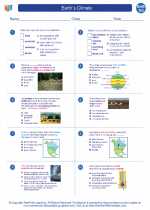Subatomic Particles
Subatomic particles are the particles that are smaller than an atom. There are three primary subatomic particles: protons, neutrons, and electrons. These particles are the building blocks of atoms and play a crucial role in determining the properties of matter.
Protons
Protons are positively charged subatomic particles found in the nucleus of an atom. They have a relative mass of 1 and a charge of +1. The number of protons in an atom determines the element's identity.
Neutrons
Neutrons are neutral subatomic particles found in the nucleus of an atom. They have a relative mass of 1 and no charge. Neutrons contribute to the stability of the nucleus and affect the atomic mass of an element.
Electrons
Electrons are negatively charged subatomic particles found outside the nucleus in specific energy levels or orbitals. They have a negligible mass compared to protons and neutrons and a charge of -1. Electrons are involved in chemical bonding and determine the reactivity of an element.
Study Guide
- What are the three primary subatomic particles?
- Where are protons located, and what is their charge?
- Describe the role of neutrons in an atom.
- Where are electrons found, and what is their charge?
- How do the number of protons in an atom determine its identity?
- Explain the significance of subatomic particles in determining the properties of matter.
Understanding subatomic particles is crucial in comprehending atomic structure, chemical behavior, and the nature of matter. Mastery of this topic lays the foundation for advanced studies in chemistry and physics.
[Subatomic] Related Worksheets and Study Guides:
.◂Earth Science Worksheets and Study Guides High School. Earth`s Climate

 Worksheet/Answer key
Worksheet/Answer key
 Worksheet/Answer key
Worksheet/Answer key
 Vocabulary/Answer key
Vocabulary/Answer key
 Vocabulary/Answer key
Vocabulary/Answer key
 Vocabulary/Answer key
Vocabulary/Answer key
